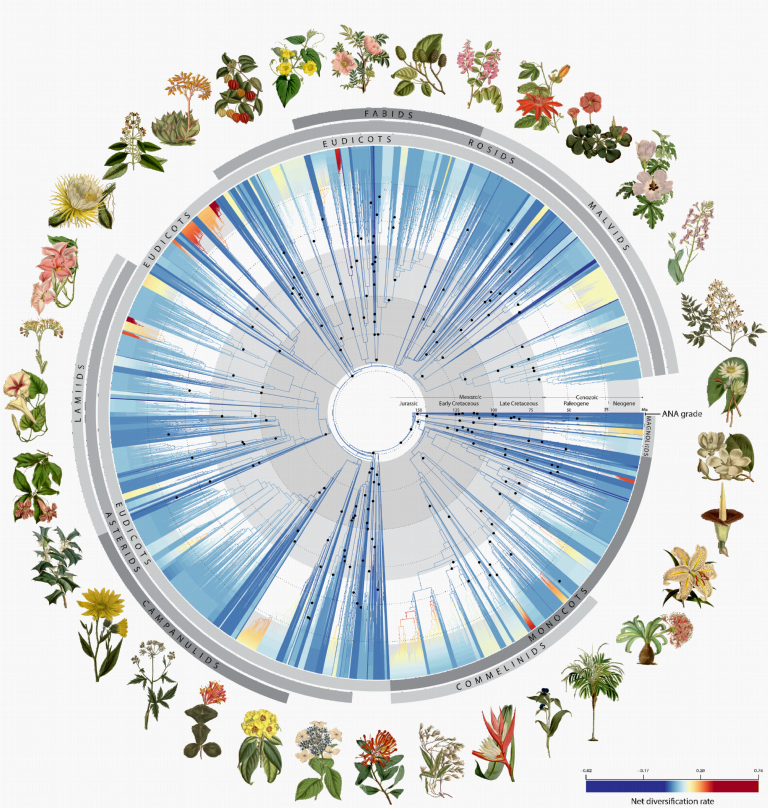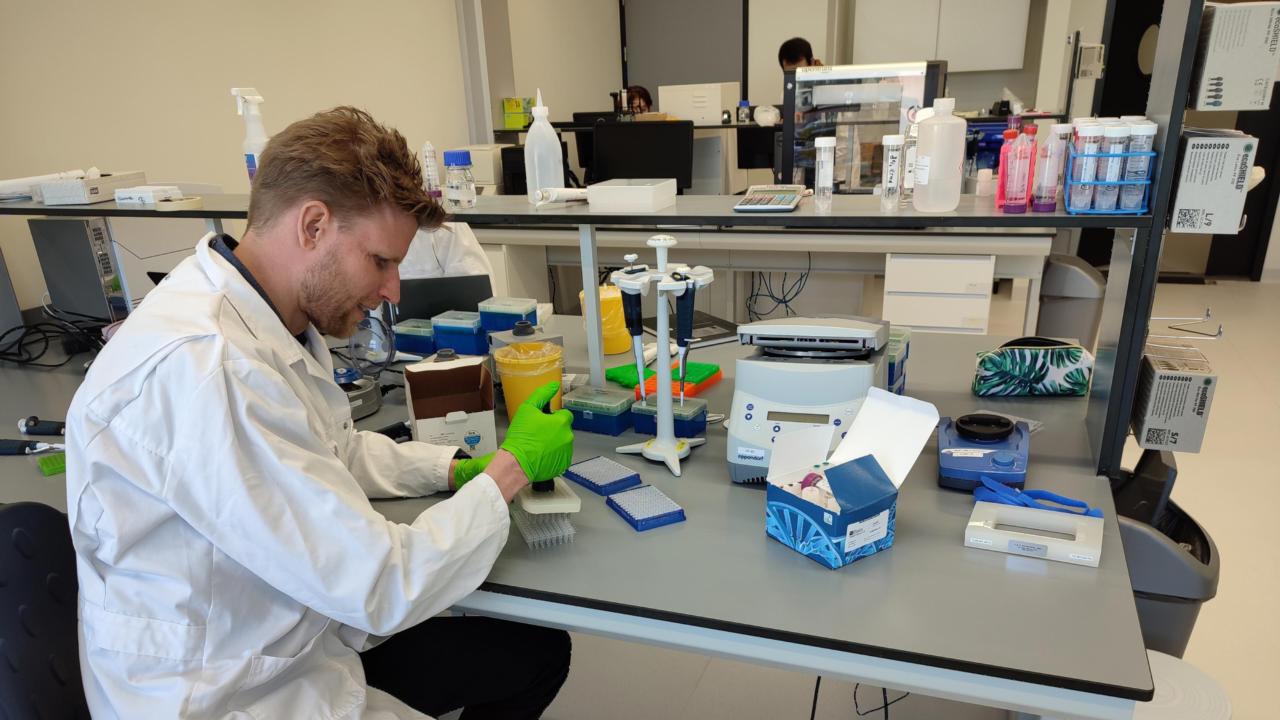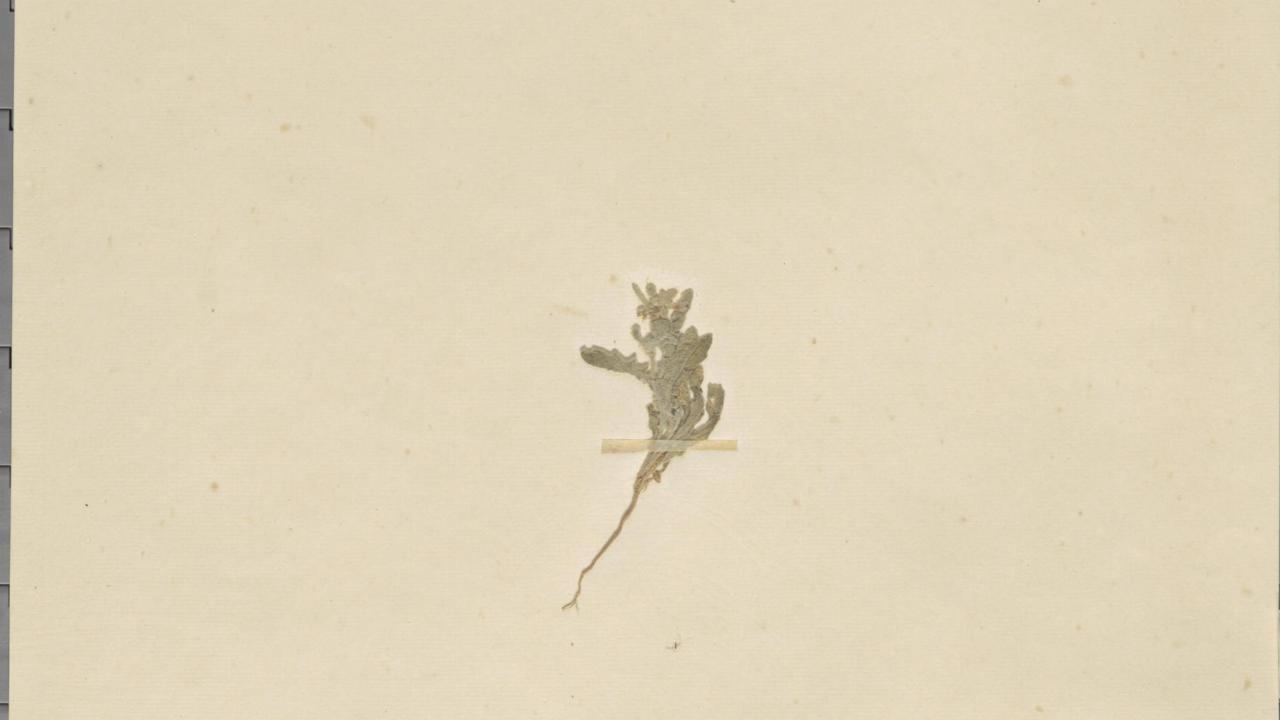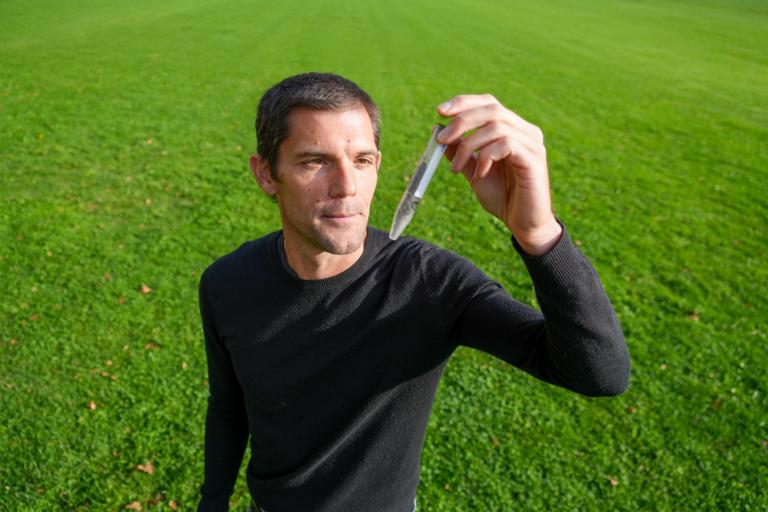
Scientists use 1.8 billion letters of genetic code to build groundbreaking tree of life.
In short:
- DNA of over 9,500 flowering plants sequenced to produce massive genomic tree of life
- ‘Like a periodic table for flowering plants’ - tree maps how plants are related
- DNA sequenced from living & centuries-old specimens, including extinct & endangered species
- Study sheds light on Darwin’s ‘abominable mystery’ of how flowering plants evolved
- Tree has a multitude of uses from plant classification to discovery of new medicines
Almost ten thousandplant species
A new paper published today in the journal Nature by an international team of 279 scientists led by the Royal Botanic Gardens, Kew presents the most up-to-date understanding of the flowering plant tree of life. Several Naturalis researchers contributed to this huge undertaking.
Using 1.8 billion letters of genetic code from over 9,500 species covering almost 8,000 known flowering plant genera (ca. 60%), this incredible achievement sheds new light on the evolutionary history of flowering plants and their rise to ecological dominance on Earth. The study’s authors believe the data will aid future attempts to identify new species, refine plant classification, uncover new medicinal compounds, and conserve plants in the face of climate change and biodiversity loss.
Milestone
The major milestone for plant science, led by Kew and involving 138 organisations internationally, was built on 15 times more data than any comparable studies of the flowering plant tree of life. Among the species sequenced for this study, more than 800 have never had their DNA sequenced before. The sheer amount of data unlocked by this research, which would take a single computer 18 years to process, is a huge stride towards building a tree of life for all 330,000 known species of flowering plants. Naturalis is also involved in that task.
Kasper Hendriks, researcher at Naturalis Biodiversity Center: ‘I've worked together with researchers in Kew to get this new tree of life complete. At Naturalis, I use almost the same technology and techniques as the Kew Team, and soon it was clear that new data from their and my studies complemented eachother perfectly. That's how Naturalis contributed several hundreds of species to the total. Naturalis' giant dried plant collection - with over 7 million specimens, was indispensable for this.

Frederic Lens, researcher at Naturalis Biodiversity Center: "It's amazing to see this gigantic project being supported by researchers from all corners of the world. This is also the only way we can realize huge Big Data projects like this one. At Naturalis, we are currently working on adding a couple of thousand more species to this Tree of Life. If tens of research institutions will also do this in the future, we will slowly but surely come closer to understanding the evoutionary history of this biggest and most important plant group."

Herbarium-specimens
The flowering plant tree of life, much like our own family tree, enables us to understand how different species are related to each other. The tree of life is uncovered by comparing DNA sequences between different species to identify changes (mutations) that accumulate over time like a molecular fossil record. Our understanding of the tree of life is improving rapidly in tandem with advances in DNA sequencing technology. For this study, new genomic techniques were developed to magnetically capture hundreds of genes and hundreds of thousands of letters of genetic code from every sample, orders of magnitude more than earlier methods.
A key advantage of the team’s approach is that it enables a wide diversity of plant material, old and new, to be sequenced, even when the DNA is badly damaged. The vast treasure troves of dried plant material in the world’s herbarium collections, which comprise nearly 400 million scientific specimens of plants, can now be studied genetically. Using such specimens, the team successfully sequenced a sandwort specimen (Arenaria globiflora) collected nearly 200 years ago in Nepal and, despite the poor quality of its DNA, were able to place it in the tree of life. The team even analysed extinct plants, such has the Guadalupe Island olive (Hesperelaea palmeri), which has not been seen alive since 1875. In fact, 511 of the species sequenced are already at risk of extinction, according to the IUCN Red List, including three more like Hesperelaea that are already extinct.
A special contributionfrom our Herbarium
In 1859 - when Charles Darwins published Origin of the Species! - an unknown botanist collected a plant named Petiniotia purpurascens in what was then called Persia. It ended up in the scientific collection of Naturalis. On September 17, 2020, Kasper Hendriks took a small leaf of the dried specimen into the lab. Thanks to modern techniques, he managed to get enough DNA from it for further research, and that's how the plant, 161 years after being sampled, could contribute to the biggest plant tree of life ever.

Putting the plant tree of lifeto good use
The flowering plant tree of life has enormous potential in biodiversity research. This is because, just as one can predict the properties of an element based on its position in the periodic table, the location of a species in the tree of life allows us to predict its properties. The new data will thus be invaluable for enhancing many areas of science and beyond.
To enable this, the tree and all of the data that underpin it have been made openly and freely accessible to both the public and scientific community, including through the Kew Tree of Life Explorer. The study’s authors believe such open access is key to democratising access to scientific data across the globe.
Open access will also help scientists to make the best use of the data, such as combining it with artificial intelligence to predict which plant species may include molecules with medicinal potential. Similarly, the tree of life can be used to better understand and predict how pests and diseases are going to affect the plants of the UK in the future. Ultimately, the authors note, the applications of this data will be driven by the ingenuity of the scientists accessing it.
More informationabout this article
This article is written by Royal Botanical Gardens Kew and Naturalis Biodiversity Center. Media wanting to report about this story can use images from this press folder. Please use the credits in the file names.
The following Naturalis researchers are involved in the publication:





